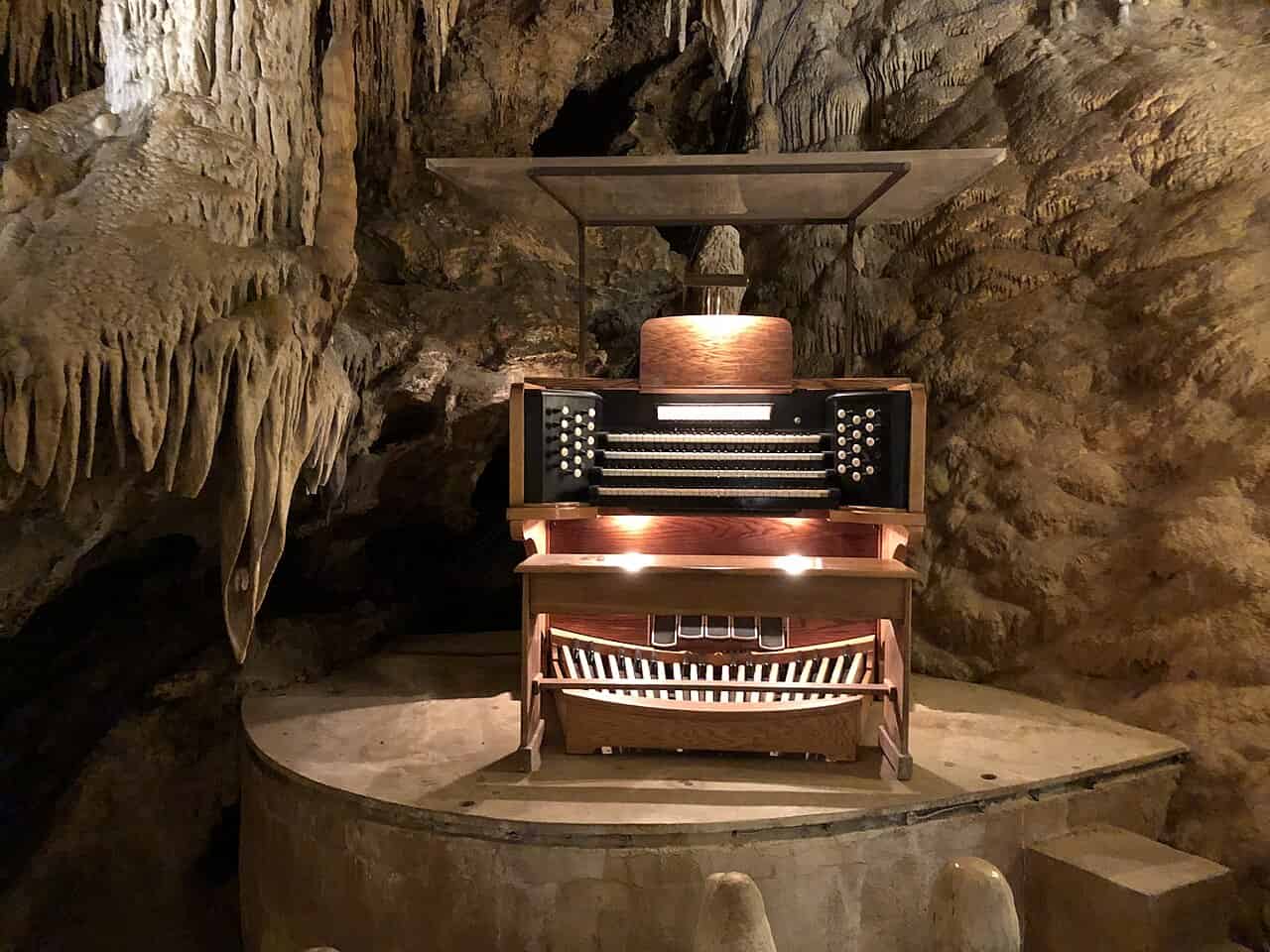Stalactite organs
Melodic Percussions
America
Between 1001 and 1900 AD
Video
Stalactite organs, most famously represented by the Great Stalacpipe Organ in Luray Caverns, Virginia, are unique musical instruments that utilize naturally occurring stalactites to produce sound. These stalactites, formed over thousands of years through mineral deposits, serve as the “pipes” of the organ. When struck by mallets, they produce musical tones, creating an ethereal and resonant soundscape within the cavern.
Origins and Development
The story of the Great Stalacpipe Organ begins over 400 million years ago when the Appalachian Mountains were formed from ancient marine sediments, resulting in the limestone structures that house the Luray Caverns today. The caverns were officially discovered in 1878, attracting visitors with their stunning geological formations. In 1954, mathematician and electronics engineer Leland W. Sprinkle visited the caverns with his son. During their tour, they observed a guide using a small mallet to strike stalactites, producing resonant sounds. Inspired by this experience, Sprinkle envisioned creating a large-scale instrument that could harness the natural acoustics of the cave. Over the next three years, Sprinkle meticulously searched through 64 acres of caverns to find and tune 37 stalactites that would serve as the organ’s “pipes.” He sanded these stalactites to achieve specific pitches and connected them to a keyboard console using rubber mallets activated by solenoids. This innovative setup allowed for a wide range of musical notes to be played, transforming the cave into an ethereal soundscape.
Construction and Features
The Great Stalacpipe Organ spans approximately 3.5 acres within Luray Caverns. It operates as a lithophone rather than a traditional pipe organ; each key on its console triggers a mallet that strikes a stalactite, producing musical tones reminiscent of a xylophone. The organ’s design includes:
- Custom Console: Resembling a traditional organ keyboard, it allows musicians to play melodies.
- Tuned Stalactites: Each stalactite was carefully selected and tuned to specific pitches by sanding them down.
- Acoustic Resonance: The unique acoustics of the cavern amplify the sounds produced by the stalactites, allowing them to be heard throughout the cave.
Uses
Stalactite organs primarily serve as musical instruments for performance and entertainment within cave systems. They are often featured in:
Concerts: The Great Stalacpipe Organ hosts daily performances, creating unique auditory experiences for visitors.
Cultural Events: It is also used for special occasions like weddings held within the cavern.
Tourist Attraction: The organ draws visitors interested in both music and geology, showcasing the intersection of natural formations and human creativity.
Materials
Stalactite organs are made predominantly from:
Bamboo or Stone: While traditional lithophones may use stone or bamboo tubes, stalactite organs specifically utilize mineral formations found within caves.
Rubber Mallets: Soft rubber-tipped mallets are used to strike the stalactites without damaging them.
Electronic Components: Wiring and solenoids are integral for connecting the keyboard console to the stalactites.
Types
While the Great Stalacpipe Organ is the most renowned example, variations exist:
Great Stalacpipe Organ: Located in Luray Caverns; features thirty-seven tuned stalactites.
Other Cave Lithophones: Various caves worldwide may have similar instruments using local geological formations.
Stalactite organs represent an extraordinary fusion of nature and music, transforming ancient geological formations into instruments capable of producing beautiful melodies. Their historical significance, intricate construction, and unique sound make them a fascinating subject for both music enthusiasts and geologists alike. The Great Stalacpipe Organ stands as a testament to human ingenuity and appreciation for natural beauty, continuing to enchant visitors with its hauntingly beautiful tones.
FAQ
What is the Stalactite organs made of?
Stalactite organs are made from natural stalactites, which are mineral formations of calcium carbonate found in caves. These stalactites are carefully selected and tuned to produce specific musical tones when struck or tapped, often using mallets or other tools.
What is the Stalactite organs used for?
Stalactite organs, often found in natural caves, are used as unique musical instruments that produce sound by striking stalactites of varying sizes with mallets or other tools. Each stalactite resonates at a specific pitch, allowing melodies and harmonies to be created. These instruments are typically featured in special performances, combining natural acoustics with artistic expression, and are valued for their rare and ethereal sound.
How do Stalactite organs work?
Stalactite organs, also known as lithophones, work by striking or tapping naturally formed stalactites to produce musical tones. The stalactites, made of mineral deposits like calcium carbonate, resonate when struck, emitting sounds of varying pitches depending on their size, shape, and density. In some cases, the stalactites are carefully tuned by shaving or altering their shape to achieve specific notes.
How many stalactite organs are there?
There are only a few stalactite organs in the world, with the most famous being the Great Stalacpipe Organ located in Luray Caverns, Virginia, USA. This unique instrument uses rubber-tipped mallets to strike natural stalactites of varying sizes, producing musical tones.
 Links
Links
References
Other Instrument
Categories


















